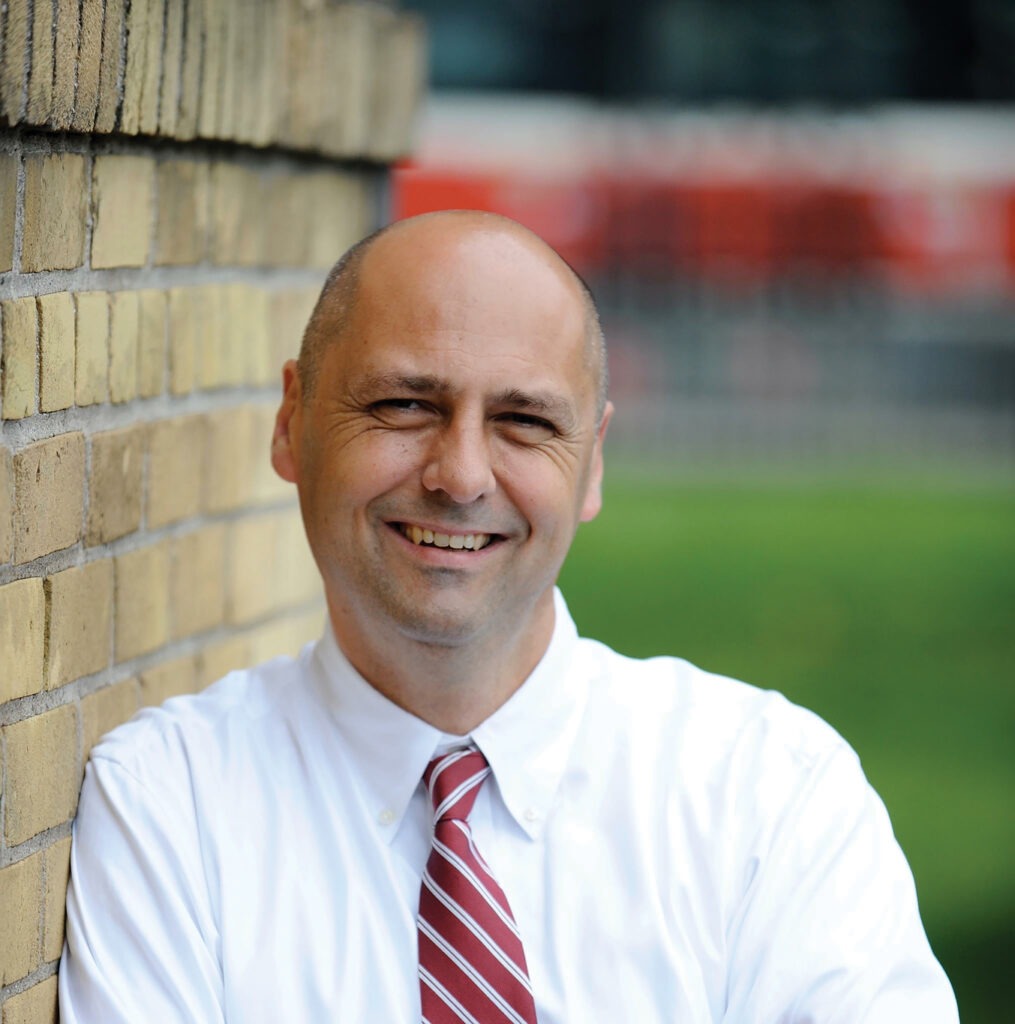By Emma Posca
Zoey Medland is a harm reduction worker for Street Health, a Toronto-based community organization that provides health care and support services to vulnerable people. As someone who has been homeless and addicted to drugs in the past, Medland sees themself in the people they help every day.
It’s really hard for people to see what they aren’t challenged with.
Dana Kaake
“Harm reduction saved my life,” Medland said. “It’s saved the lives of a lot of people I care about. It gave me a sense of purpose to help others and it made me value myself because I could see the value in my story and experiences.”
Medland has seen the highs and lows in their patients too. Some have been homeless or battling addiction for years but have started participating in the peer-led activities that Medland and Street Health offer. Whether that’s organizing paid opportunities like jobs, workshops for life skills, holding art programs or movie nights, they said these kinds of peer-led activities are essential in harm reduction.
“When you build community you have peers,” Medland said. “If you see a peer that’s excelling, you’re an inspiration to people so they want to come to you and see how you got where you are.”
When Medland was experiencing homelessness, they didn’t have access to support and didn’t know what was available to them at the time. Safe supply, access to housing, and supervised injection sites are a few of the supports that Medland believes are crucial parts of harm reduction.
“Then people aren’t doing their drugs in hiding or alone and dying,” they said.
An average of eight people per day died from drug-related deaths across Ontario in 2021, the highest recorded number so far in the province. Health Canada points to the introduction of fentanyl, a potent opioid pain reliever, being “cut” into street drugs as the reason for the spike in overdose deaths. Healthcare workers are left to pick up the pieces from the ongoing crisis and some are advocating for the government to make serious changes.

The Registered Nurses Association of Ontario’s (RNAO) Matthew Kellway has been advocating for the decriminalization of personal possession of drugs for years. As RNAO’s director of policy, he leads their campaign called “DecriminalizeNow” that urges municipal governments across southern Ontario to sign a pledge that promises to work toward decriminalizing the drugs that caused a steady increase in overdose deaths in Ontario since 2016.
“We’re talking accidental overdoses. When they’re accidental they can be prevented,” Kellway said. “One hopes that people see that loss of life and agree with us that this is a public health crisis, and we have to put saving lives first and respond accordingly.”
Toronto Public Health applied for an exemption request to Health Canada in January of last year. Sixteen different organizations including the Toronto Police Service and other harm reduction organizations attached letters of support.
“Substance use is a health issue,” he said. “And it’s wrong to criminalize a health issue. What you’re doing when you criminalize a health issue is preventing people from getting care for that issue.”
Montreal, Edmonton and Vancouver were the first cities in Canada who have gained momentum in urging their elected officials to address the drug crisis happening there. Kellway sees this as a significant endorsement coming out of civil society and politics for decriminalization.
Vancouver successfully began its exemption from the Act after years of echoing that decriminalization is an important step in harm reduction. In 2016, the province declared a public health emergency seeing approximately 994 deaths that steadily increased in the coming years. By May 2022, the province was green-lit for its three-year exemption from the Act.
Kellway said the exemption in British Columbia is a step forward, although it’s not “perfect” because of the limited list of exempted drugs, as well as the small quantity being decriminalized.
“There’s clearly hope that it’ll be a successful program and give people thought for decriminalizing nationally,” he said.
One country in particular, Portugal, has seen a significant impact on its drug crisis after being the first country in the world to decriminalize small possession of drugs. They saw a dramatic decrease in overdose deaths, HIV/AIDS users and jail-time for drug offenses. They also saw an increase in people who were voluntarily admitting themselves into treatment, according to a report by The Drug Policy Alliance (DPA), which is based in New York.
The Portuguese government began by creating a committee of experts including doctors, lawyers, psychologists and social activists to study and make recommendations on what policies to change and which social supports are needed for drug users. The committee studied the reasons why people use drugs and decided that punishing people with addictions was not working – people struggling with addiction need empathy and support instead.
Instead of arresting those found with small amounts of drugs, police were instructed to refer the person to a “Dissuasion Commission.” This was a team of one legal representative and two healthcare or social service workers who decide the type of help the person needs.
Applying a harm-reduction model is said by the DPA to be critical to Portugal’s success. Along with offering social supports, agencies engage with people who are using drugs in public and provide clean needles, toiletries, condoms and information on getting treatment.
Psychotherapy intervention is another crucial part of harm reduction, according to a research-based study by the National Library of Medicine. It targets the “social, environmental, and psychological factors” where medication cannot.

Dana Kaake is a registered psychotherapist in Toronto who has helped people recover from drug addiction. She said that people who are in recovery were using substances to “mask” their feelings.
“I give them a space where they can be accepted, in whatever they are experiencing,” Kaake said. “I give them a spot where they can be seen.”
Drug addiction comes as a person’s defense mechanism from problems that rise throughout their life, Kaake said. She added this could be because of a lack of balance or relationship tensions with friends and family. To have a better understanding of what a person battling addiction needs begins with reducing the stigma around substance use.
“For someone who doesn’t have a substance addiction, they don’t understand what someone with a drug addiction is going through,” Kaake said. “It’s really hard for people to see what they aren’t challenged with.”
Kaake said part of the stigma surrounding drug use is shame and that shaming someone battling addiction never works, even when it’s “instinctual” to do so. Being able to allow someone in recovery to make “small steps” is part of a harm-reduction model.
“Fine, you’ve tried so many times to quit smoking methamphetamine, and it hasn’t worked,” Kaake said. “I always ask my clients, ‘if you can’t do that big thing, what is the smallest step you can take in that direction?’ If for them, smoking weed or reducing the amount that they have is the smallest step they can take in the direction of where they ideally want to be, I think that’s okay.”
She noted that decriminalizing small possession of drugs is a good thing because someone going through the prison system for having an addiction isn’t the solution.
“It’s not gonna help them change because they’re struggling with shame and pain,” Kaake said.
However, not everyone is on-board with decriminalizing small possessions of drugs.
“I don’t believe decriminalizing crack, heroin, illicit fentanyl and methamphetamines is the solution,” Progressive Conservative Leader Pierre Poilievre said during a question period in New Westminster, B.C. on March 14.
When asked about keeping laws the same about supervised consumption sites, Poilievre said the overall system has failed and data shows overdose rates have skyrocketed under the NDP and Liberal approaches.
He said that putting more drugs on the streets makes for higher overdoses and more crime.
“We should use the resources to provide recovery and treatment, which is the only proven way to deliver life-saving help to people and bring home drug-free lives,” he said.
Pollievre said he believes that giving drug users a hospital bed and prescribed medication to wean them off the street drug they are addicted to is a better method to curb the opioid crisis across the country.
However, this option has been explored by other critics. Kellway believes that Ontario does not have the ability to respond to the issue this way. He said with the “sheer number of deaths” Ontario is seeing from overdoses, it overwhelms a treatment response alone. He highlights the existing shortage of hospital beds and the lack of funded treatment programs currently in place.
“For the provincial government to say we want to respond with treatment is frankly irresponsible with the number of people who are accidentally dying from these drugs daily,” he said.
This is one of the reasons why harm reduction workers like Medland advocate for supervised injection sites. They have seen first-hand how these places offer people a space to use drugs where, in the case of an overdose, trained medical professionals will revive them. Not only that, supervised injection sites are also a place where people can stay warm, fed and have a bed to sleep in at night.
A harm reduction model involves a multi-platform approach to curbing drug use, and part of that is more recovery-based housing. Medland said this is what’s needed to provide stability for people in order to seek help. It gives someone the option to continue using drugs until they choose to stop, without being thrown out onto the streets.
“People think that drug users don’t want to live. They don’t like themselves, they’re selfish and they don’t care about community or the people around them but that’s actually not true,” they said. “It seems that way because they’re stigmatized and alienated and pushed out instead of embraced.”